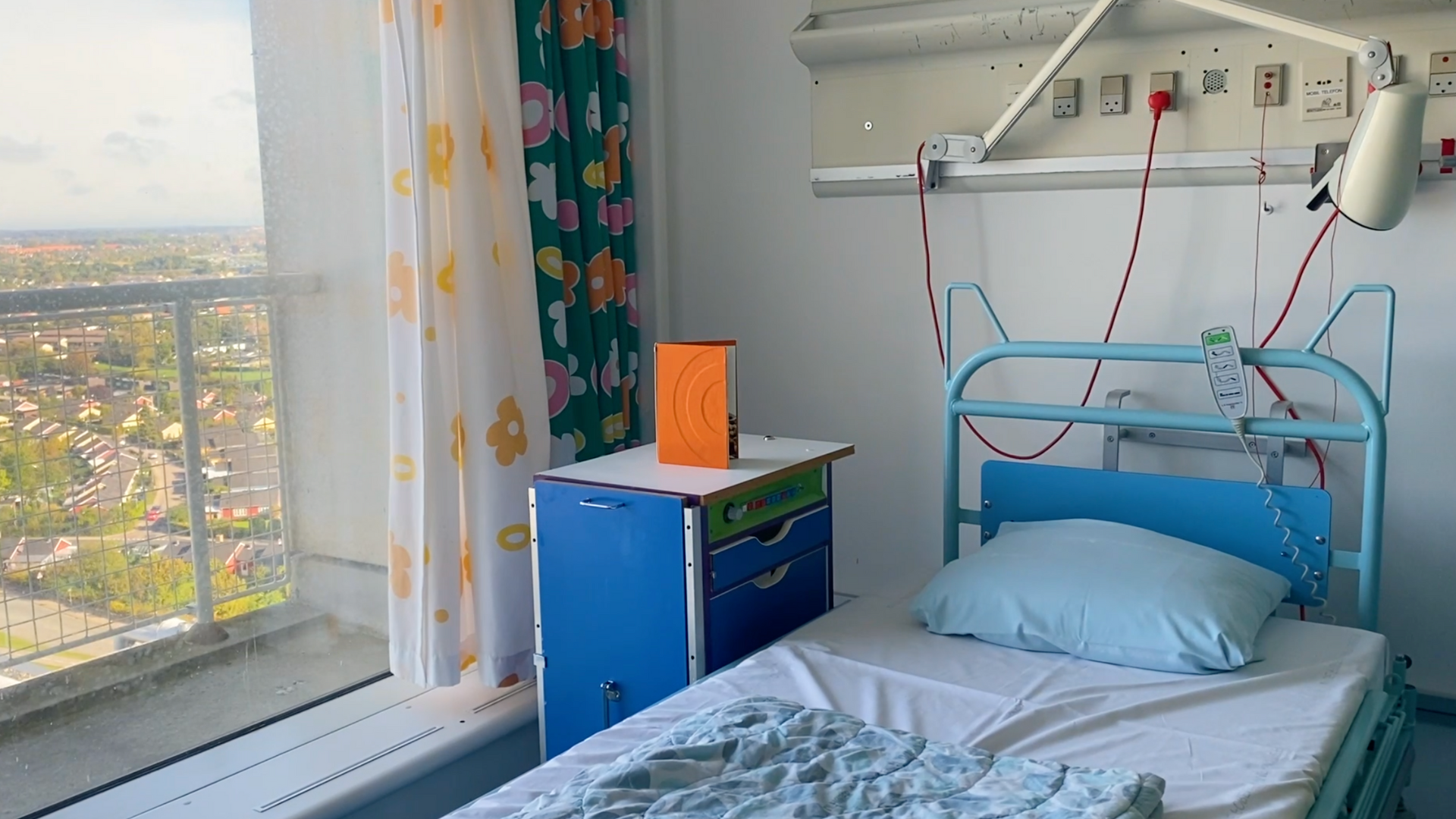The Welcome Book at Herlev Hospital
In collaboration with Copenhagen Health Innovation and Herlev Hospital, this project revolved around creating better communication between health professionals and patients, with the intention of creating a coherent process for cancer patients on the bed ward. In this connection, we have worked with an overview of information, the patient's sense of control and co-determination and the contact with the staff.
Our final design proposal is a Welcome Book that collects all non-vital information for the patient. The aim is to give the patient a sense of control and overview, and at the same time relieve the staff, who can instead focus on other care. The Welcome Book should be seen as a natural extension of the patients room, and with its material and graphic lightness be a warm, clear welcome. The design of the Welcome Book is inspired by Poul Gernes color universe, which takes shape throughout the whole of Herlev Hospital.
The goal was therefore to create a tool to give the patient an overview and control, which at the same time takes part of the information burden off the nurses' shoulders. Inspired by IDEO's theory of prototyping, we made simple models early in the process and quickly presented the prototypes to the department. It opened up for a very direct dialogue, which was solely focused on the idea and purpose, and which could easily be moderated during the dialogue. At the same time, we could discard ideas early on.
In idea generation, we came to a standstill several times in the attempt to understand what the problem really was. By looking at the problem from many different perspectives, e.g. nurses and patients, and with different approaches, e.g. emotionally and professionally, we found out more about how we could contribute. This meant, among other things, that we had to do different methods several times, as we asked completely new questions with new perspectives.
Client
Copenhagen Health Innovation
Year
2021
Patients with cancer who are hospitalized, are typically on their way through a longer course of treatment in one of the cancer department's outpatient clinics, but are on the inpatient ward because they experience strong side effects or are in the terminal phase. The patient is thus in a very difficult place in their course. While those in the outpatient clinic still have an everyday life at home with their own routines, more food options and personal contact, those in the inpatient unit are less in control of their everyday life.
In interviews with patients, we experienced a sense of abandonment in terms of making hospitalization better: it just had to be over. We also learned that there was a lot of the non-vital information that was given a lower priority in the passing on by the staff, such as meal times, menu, exercise options and other practical information. The information was mainly passed on orally by the staff, or with a multitude of boards and printouts in the corridors.
This project was made in collaboration with Martha Rose O’Connor Bonde and Gabriela Valenzuela-Luczynska.








